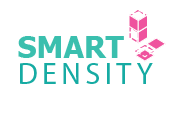Attending your project’s Urban Design Review is worthwhile, and here’s what to do to get the most out of it
Having sat through many Design Review Panels as both a presenter and panel member, I am convinced that it is one of the better parts of the planning process. It not only guides how the city will look for decades to come but is a way to really up a project and bring it to new heights. Not literally, of course; Urban Design Panels don’t comment on height.
I was a member of the City of Burlington Urban Design Panel from 2017 to 2019 and over the years, have presented many projects to different urban design panels across the GTA. During this time, I have heard on more than one occasion that having a Design Review Panel only delays projects and adds bureaucracy to the process.
In my experience, a design review does not greatly impact timelines and is a remarkable process for getting practical advice on a project.
What is the Design Review Process?
The Design Review process is a stage of the development approval process where an Urban Design Panel would review a project and provide comments and advice to City Staff and the applicant.
Urban Design Panels are typically made up of various design professionals such as architects, landscape architects, and urban designers. The Panel serves as an advisory board for design matters and does not make any decisions on applications or policies.
A Design Review is only required for projects that meet a certain threshold or are located in certain areas. For Toronto, this includes public and private projects with significant public realm impacts and projects located in Design Review Districts or along avenues, major streets and surface transit priority corridors.
Is Attendance Mandatory?
Applicant attendance is not mandatory but highly recommended. A Design Review is a fantastic opportunity to get advice on the project from leading professionals in the field.
If there are specific things you would like to hear feedback on, it is a good idea to use leading questions to direct the discussion. By presenting your thoughts, considerations, and process, you can get practical and beneficial feedback. Best of all, there is no pressure to make a case as the Urban Design Panel is an advisory board that gives advice, not make decisions.
The Urban Design Panel will still review the project and give city staff advice regardless of the applicant and proponents’ attendance so take advantage of the opportunity!
What Should you Expect in a Design Review Panel?
A Design Review Panel is typically one hour long. Roughly 10-15 minutes is given to the applicant or proponent to present the submission, then the remaining time would be for discussions and questions.
In the 10-15 minutes, you should expect to present the project, how it fits within its context, and design considerations. Always consider clarity, conciseness, and coherence when creating your presentation. There is only so much time after all, try to deliver information throughout the presentation so the panelists can be brought up to speed on your project.
You can find 9 tips in our mini-webinar Urban Design Panel: What You Should Know Before Attending.
Makes a Design Review so Great? [Or: What are the benefits of a Design Review? Or: Why does this matter?]
Even if you have a proponent and team who will present your project, taking the time to attend your Design Review is a great way to glean ideas on how the project should move forward.
During a Design Review, city staff will seek advice on key issues they identified. By attending, you can obtain expert advice on how to address these issues. For example, reexamining pedestrian connectivity to prevent fragmented edges in a project and ensure that planned public realm amenities will get their anticipated use. Or shifting the location of public amenities to connect with the broader context. You can see the type of commentary given in the Design Review Panel Meeting recording or in the minutes found on the Toronto Website.
While panelists offer objective commentary on subjects that help or hurt the public realm, panelists can also give great suggestions that can lead the project to success. For example, how to mitigate sound so that future residents and public space users will truly find your development an enjoyable place to be. Or how you can better present your project so your efforts and considerations are carried through and delivered to the viewer more clearly.
In the early stages, a Design Review is also a great way to find some potential red flags that might pose as limiting factors for the development. For example, the site size being incompatible with the desired typology and effect. Or the tree species selected for landscaping being incompatible with the site location. Having these pointed out is an opportunity to pause and maybe pivot the project and details before time and resources are wasted.
Not only that, panelists comment on both issues of concern and appreciation. Attending your Design Review is a great way to affirm what you are doing well and what the strong parts of your project are from a public perspective.
An Urban Design Panel is filled with great minds and industry leaders. You should always attend your Design Review, hearing what they have to say about your project can’t go wrong.
